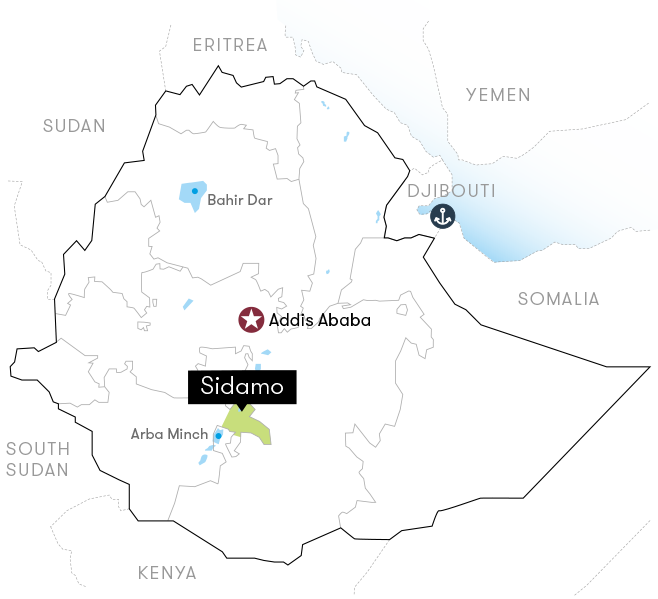Beanroasters.se
Ethiopia Sidamo Awash River Natural green coffee beans
Ethiopia Sidamo Awash River Natural green coffee beans
Couldn't load pickup availability
Ethiopia Sidamo Awash River Natural green coffee beans
or unroasted coffee, Råkaffe, Raw coffee etc
I myself roast this on a very light roast to bring out maximum flavor. Heating at just over 260 degrees with 1 kilo batch. Then a nice downward curve towards a total temp of 209c and usually end around 15-18% DV time.
Roast Ethiopia Coffee:
HOW TO ROAST ETHIOPIAN COFFEE BEANS
Obviously, when dealing with Ethiopian beans, there are many variations and adjustments to roasting to consider. That said, there are some guiding principles that can help you create your roasting profile.
Preparation & sampling
Ethiopian coffee is no different from any other coffee when it comes to roasting. You must have a strategy.
This is especially important with beans that are as unpredictable as Ethiopian beans. it is important to be ready for surprises. Ethiopian coffees are a dynamic bunch when it comes to flavors and tones, even when they come from the same geographical area.
Temperature increase rate & cooking level
A gentle temperature increase and careful monitoring throughout the process will help you get the best out of your beans. Also, a light roast will let their flavors and acidity shine.
With Ethiopian coffee, the roaster has to remember that you are trying to settle for a delicious average bean development for all the beans in the drum. [This is] mainly due to differences in screen size and often unknown varieties that contain a lot.
To navigate these complexities and preserve the delicate and nuanced flavor profile of specialty beans, he recommends a relatively low rate of temperature rise during first crack, for washed and natural beans. Always remember that natural products tend to darken faster than washed coffee.
A slow, temperature-controlled roast is ideal for Ethiopian coffee beans. Credit: Puxan
About the coffee:

Awash River is a curated coffee sourced from smallholder farmers served by the Awash River in the Sidamo region of southern Ethiopia. These farmers rely on the great river and its many tributaries to grow coffee and sustain their communities.
The Awash cuts through nearly 750 miles of Ethiopia's Great Rift Valley, providing an important water source for millions. Archaeologists believe that people have lived along the river since the dawn of man. Known as the "Cradle of Mankind," the Middle Awash is home to some of the most important archaeological discoveries in history, including perhaps the most famous hominid fossil ever found: "Lucy."
In a poetic twist, Ethiopia is also the birthplace of the Arabica coffee tree. When farmers began to harvest the wild forest coffee in southern Ethiopia, they in turn began to grow it on their own land. Nevertheless, wild coffee can still be found throughout Ethiopia and is represented by thousands of distinct varieties, many of which are still grown by farmers in Sidamo to this day.
| Origin | Ethiopia |
|---|---|
| Subregion | Sidamo |
| Harvest Season | 2021/22 |
| Producer Type | Small Holder Farmers |
| Processing | Natural/Dry Processed |
| Plant Species | Arabica |
|---|---|
| Variety | Ethiopia Heirloom Varieties |
| Coffee Grade | ETH CA NAT PAGE G3 |
| Bag Weight | 60 KG BAG |
| Bag Types | Grain Pro / Ecotact |

The region
The Sidamo and Yirgacheffe regions have developed a reputation for some of the most sought after coffees in the world. With the river as a rich source of clean water; the combination of high altitude, fertile soil and abundant sunshine provide ideal conditions for arabica coffee cultivation. Heirloom arabica varieties, which still grow wild in Ethiopia, contribute to a beautifully unique cup profile characterized by notes of tropical and stone fruit and bright florals.

The process
This coffee is naturally processed, whereby ripe coffee cherries are dried in the sun on patios and raised African beds for approximately 12-15 days, depending on ambient conditions. This sun-drying process allows many of the sugars in the cherry pulp to be transferred to the bean and presented in the cup as complex tropical fruit flavors. The raised beds provide airflow to facilitate a consistent drying process, although the cherries are also turned periodically to prevent mold and covered at night to protect against rain and moisture. Once the ideal moisture level is reached, the dried cherries rest in a cool environment before being peeled, sorted and hand-picked for export.
Share


